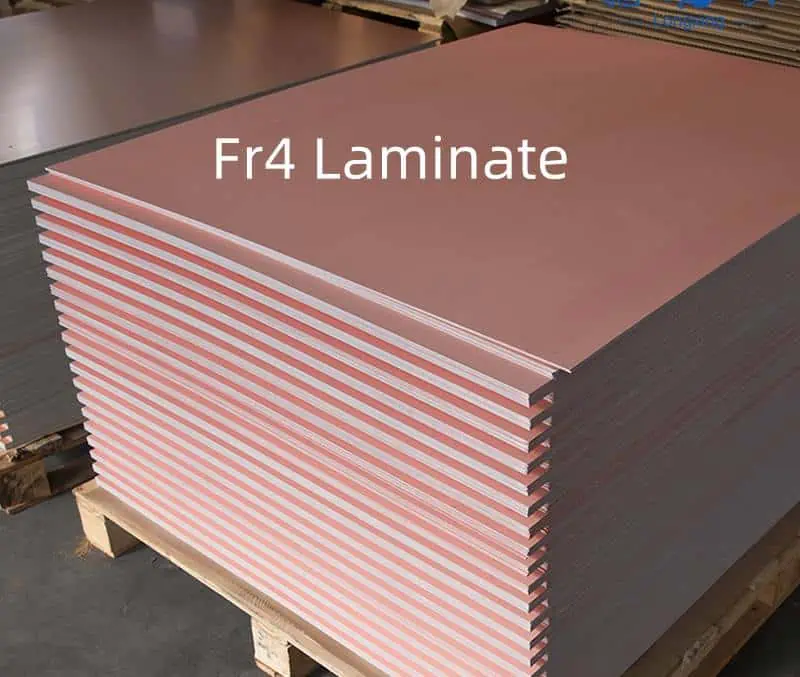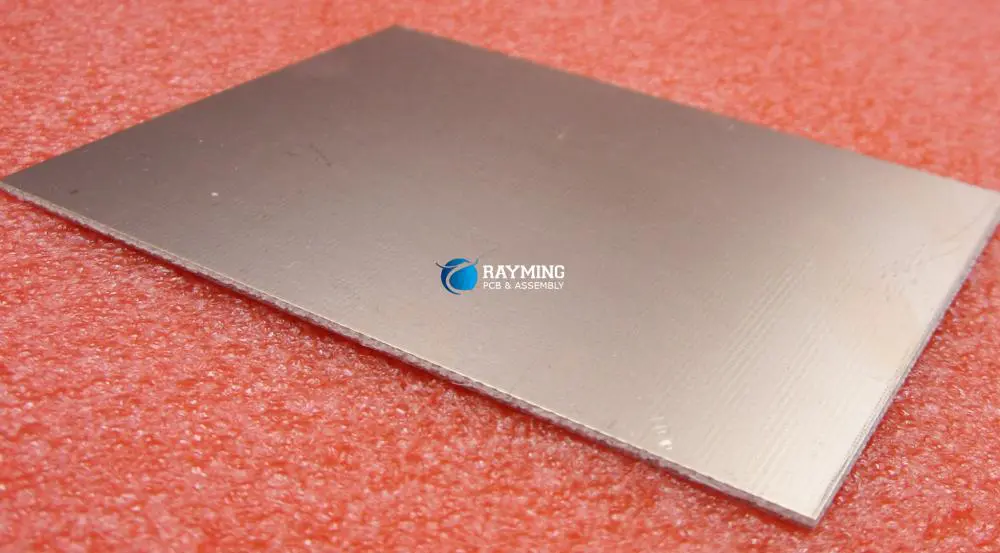PCB Laminates: Types, Materials, and How to Choose the Best for Your Design
We use the following raw materials in our production, If need special PCB raw material, Pls contact us
What are PCB Laminates?
PCB laminates are the core materials used in the construction of printed circuit boards. These materials provide the structural foundation and electrical insulation necessary for the proper functioning of electronic circuits. Laminates typically consist of layers of reinforcement material (such as glass fiber) impregnated with a binding resin (like epoxy). The choice of laminate significantly impacts a PCB’s electrical, thermal, and mechanical properties.
Key functions of PCB laminates include:
- Providing mechanical support for components and copper traces
- Electrical insulation between conductive layers
- Heat dissipation and thermal management
- Determining the board’s overall durability and reliability
Understanding the various types of PCB laminates and their properties is crucial for engineers and designers to create high-performance, reliable electronic products.
Types of Laminate
PCB laminates come in various types, each suited for specific applications and requirements. Let’s explore the most common types:

1. FR4 Laminate
FR4 (Flame Retardant 4) is the most widely used PCB laminate material. It’s a composite material composed of woven fiberglass cloth impregnated with an epoxy resin binder.
Key features:
- Good electrical insulation properties
- Excellent mechanical strength
- Flame retardant (UL94 V-0 rated)
- Cost-effective for most applications
Applications: Consumer electronics, industrial equipment, automotive electronics
2. Flexible Laminates
Flexible laminates are designed to create bendable or flexible PCBs. They typically use polyimide or polyester films as the base material.
Key features:
- Ability to bend or flex without breaking
- Thin and lightweight
- Good thermal stability
- Resistant to chemicals and solvents
Applications: Wearable devices, aerospace, medical implants
3. Metal-Core Laminates
Metal-core laminates incorporate a metal base (usually aluminum) with a thin layer of dielectric material and copper foil on top.
Key features:
- Excellent heat dissipation
- High thermal conductivity
- Good dimensional stability
Applications: LED lighting, power supplies, automotive lighting
4. Ceramic Laminates
Ceramic laminates use ceramic materials as the base substrate, offering superior performance in high-frequency applications.
Key features:
- Excellent high-frequency performance
- Low dielectric loss
- Good thermal stability
- High cost compared to other options
Applications: Satellite communications, radar systems, high-frequency RF circuits

5. Rogers Laminate
Rogers laminates are high-performance materials designed for high-frequency and high-speed digital applications.
Key features:
- Low dielectric loss
- Stable electrical properties across a wide frequency range
- Good thermal stability
- Higher cost than standard FR4
Applications: 5G infrastructure, aerospace, defense electronics
6. BT Epoxy Laminates
BT (Bismaleimide Triazine) epoxy laminates offer improved thermal and electrical properties compared to standard FR4.
Key features:
- Higher glass transition temperature (Tg)
- Lower coefficient of thermal expansion (CTE)
- Better dimensional stability
- Improved electrical performance at high frequencies
Applications: Telecommunications equipment, servers, high-reliability electronics
7. Halogen-Free Laminates
Halogen-free laminates are environmentally friendly alternatives to traditional FR4, designed to meet strict environmental regulations.
Key features:
- Free from halogenated flame retardants
- Reduced environmental impact
- Comparable performance to standard FR4
- Slightly higher cost than traditional FR4
Applications: Consumer electronics, medical devices, automotive electronics in regions with strict environmental regulations
Manufacturers of PCB Laminates and Materials

The PCB laminate industry is dominated by several key players, each specializing in different types of materials. Here’s an overview of the main manufacturers:
1. Main FR-4 Raw Laminates Manufacturers
KINGBOARD (KB)
- One of the largest FR-4 manufacturers globally
- Known for consistent quality and wide product range
NAN YA
- Offers a comprehensive range of FR-4 and high-performance laminates
- Strong presence in Asian markets
SHENGYI
- Specializes in high-performance and halogen-free laminates
- Known for innovative materials for 5G applications
ISOLA Group
- Global leader in high-performance laminates
- Offers a wide range of materials for various applications
ITEQ Corporation
- Focuses on high-frequency and high-speed digital materials
- Known for their advanced halogen-free solutions
Panasonic Corporation
- Offers a range of high-reliability laminates
- Strong presence in automotive and industrial markets
Goworld Lamination (GMD)
- Specializes in FR-4 and high-Tg materials
- Growing presence in global markets
HUAZHENG New Material
- Offers a range of FR-4 and specialty laminates
- Known for cost-effective solutions
2. Microwave and High-Frequency Laminates Manufacturers
Rogers Corporation
- Leader in high-frequency and high-performance materials
- Known for their RO4000® and RT/duroid® series
Taconic
- Specializes in PTFE-based and high-frequency laminates
- Offers materials for demanding RF and microwave applications
TEFLON
- Trademark of Chemours (formerly DuPont)
- Known for high-performance PTFE-based materials
DuPont
- Offers a range of high-performance materials
- Known for their Pyralux® flexible circuit materials
ARLON
- Specializes in high-frequency and high-temperature materials
- Strong presence in aerospace and defense markets
Nelco
- Offers a range of high-speed digital and RF/microwave materials
- Known for their N4000-13 series for high-layer count PCBs
Megtron
- Trademark of Panasonic
- Specializes in low-loss materials for high-speed digital applications
Types of Copper Clad Laminates (CCL)

Copper Clad Laminates (CCLs) are the foundation of PCB manufacturing. Here are the main types:
1. FR-4 (Flame Retardant 4)
- Standard material for most PCB applications
- Good balance of electrical, mechanical, and thermal properties
2. High Tg FR-4
- Enhanced thermal properties for demanding applications
- Better dimensional stability at higher temperatures
3. Halogen-Free FR-4
- Environmentally friendly alternative to standard FR-4
- Meets strict environmental regulations
4. CEM-1 and CEM-3
- Composite Epoxy Materials
- CEM-1: Paper core with single-sided epoxy-coated fiberglass
- CEM-3: Woven glass fabric core with epoxy-coated fiberglass on both sides
5. Polyimide
- High-temperature resistance
- Excellent dimensional stability
- Used in aerospace and military applications
6. PTFE (Teflon)
- Excellent high-frequency properties
- Low dielectric constant and loss tangent
- Used in RF and microwave applications
7. Alumina
- Ceramic-based material
- Excellent thermal conductivity
- Used in high-power applications
Types of Copper Foil
The type of copper foil used in PCB laminates can significantly impact the board’s performance. Here are the main types:
1. Electrodeposited (ED) Copper
- Most common type
- Produced by electroplating copper onto a rotating drum
- Available in various weights (thickness)
- Good for general-purpose applications
2. Rolled Annealed (RA) Copper
- Produced by rolling copper ingots into thin sheets
- Better ductility and flex properties than ED copper
- Often used in flexible PCBs
3. Reverse Treated Copper
- Specially treated for improved adhesion to the laminate
- Used in high-reliability applications
How to Choose PCB Laminates
Selecting the right PCB laminate is crucial for the success of your electronic design. Consider the following factors:
Application Requirements
- Operating frequency
- Power handling needs
- Environmental conditions (temperature, humidity, etc.)
Electrical Properties
- Dielectric constant (Dk)
- Dissipation factor (Df)
- Insulation resistance
Thermal Properties
- Glass transition temperature (Tg)
- Coefficient of thermal expansion (CTE)
- Thermal conductivity
Mechanical Properties
- Flexural strength
- Dimensional stability
- Moisture absorption
Manufacturing Considerations
- Ease of drilling and machining
- Compatibility with various surface finishes
- Ability to withstand multiple reflow cycles
Cost and Availability
- Material cost
- Lead time
- Minimum order quantities
Regulatory Compliance
- UL flammability rating
- RoHS compliance
- Halogen-free requirements
High-Speed Networks Drive PCB Laminate and Material Choices
The rapid growth of high-speed networks, including 5G, data centers, and high-performance computing, is driving innovation in PCB laminates. Key considerations include:
Low-Loss Materials
- Essential for maintaining signal integrity in high-frequency applications
- Materials like PTFE and advanced laminates from Rogers and Panasonic are gaining popularity
Controlled Impedance
- Consistent dielectric properties across the board are crucial for maintaining signal quality
- Advanced FR-4 materials and specialized high-frequency laminates offer better control
Thermal Management
- Higher data rates often mean increased power consumption and heat generation
- Metal-core and ceramic-filled laminates are becoming more common in high-speed designs
Signal Integrity
- Reduced crosstalk and electromagnetic interference (EMI) are critical in dense, high-speed layouts
- Specialized laminates with engineered dielectric properties help mitigate these issues
Dimensional Stability
- High-layer count boards for complex high-speed designs require excellent dimensional stability
- Advanced laminates with low CTE and high Tg are essential for these applications
The Impact of Laminates on PCB Manufacturing

The choice of laminate material can significantly impact the PCB manufacturing process:
Drilling and Machining
- Some high-performance laminates may require special drill bits or machining techniques
- Ceramic-filled materials can be more challenging to drill and route
Layer Registration
- Materials with better dimensional stability allow for tighter registration tolerances
- Critical for high-density interconnect (HDI) and fine-pitch designs
Plating and Metallization
- Different laminates may require adjusted plating processes
- Some high-frequency materials may need special surface preparation for optimal copper adhesion
Impedance Control
- Consistent dielectric properties of the laminate are crucial for achieving tight impedance tolerances
- May require adjusted manufacturing processes for different laminate types
Thermal Management
- Metal-core and high thermal conductivity laminates may require special handling and processing
Cost and Yield
- More exotic laminates often come with higher material costs and potentially lower yields
- May require specialized equipment or processes, impacting overall manufacturing costs
Conclusion
PCB laminates play a crucial role in the performance, reliability, and manufacturability of electronic devices. As technology continues to advance, with higher speeds, greater power densities, and more demanding environmental conditions, the choice of laminate becomes increasingly critical.
Engineers and designers must carefully consider the electrical, thermal, and mechanical properties of various laminates to select the optimal material for their specific application. While traditional FR-4 remains a popular choice for many applications, the growing demand for high-speed, high-frequency, and high-reliability electronics is driving the adoption of advanced laminate materials.
By understanding the types of laminates available, their key properties, and how they impact both performance and manufacturing, designers can make informed decisions that balance performance requirements with cost considerations. As the electronics industry continues to evolve, staying informed about the latest developments in PCB laminate technology will be essential for creating cutting-edge electronic products that meet the demands of tomorrow’s markets.
